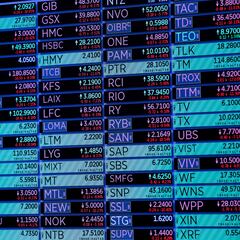What is a Series I Bond and why consider buying now?
Investors looking to shelter their money from rising inflation may want to consider US Treasury Series I Bonds which periodically adjust for inflation.

The US Bureau of Labor Statistics released its report on inflation of consumer goods and services for April. Prices were 8.3 percent higher than they were in 2021, which surpassed the Dow Jones’ estimate. The silver lining to last month’s data is that it was slightly lower than the 8.5 percent reported in March.
Rising prices are eating into household finances across the nation and making hard to make ends meet, let alone save for the future. However, if you have money to spare there is one financial product whose return on investment has improved due to high inflation, US Treasury Series I Bonds.
Also see:
What are Series I Bonds?
Series I savings bonds are a low-risk savings product since they are issued by the Treasury Department, so they have the full backing of the United States government. During the lifetime of these bonds, they earn interest with one component fixed while the other is periodically adjusted protecting your investment from inflation.
The fixed rate stays the same for the life of the bond, which is currently zero, but the Treasury recently announced that the inflation rate for Series I savings bonds issued from May 2022 through October 2022 will have an overall rate of 9.62 percent. In November the next semiannual inflation rate will be announced which will apply to the following six-month period.
Six months after the bond is issued, the interest earned on the bond is rolled over into the principal. The new interest rate will be applied to the new principal for the next six-month period, released by the Treasury every May and November, where upon the process will repeat.
#PressRelease Effective today, Series EE #savingsbonds issued May 2022 through October 2022 will earn an annual fixed rate of 0.10%. Series I savings bonds will earn a composite rate of 9.62%, a portion of which is indexed to inflation every six months. ➡️https://t.co/V28LOAkWrG pic.twitter.com/VEIPaSza21
— Fiscal Service (@FiscalService) May 2, 2022
How can you buy Series I Bonds?
Unlike other bonds, they are not sold through brokerages. Investors can buy electronic bonds directly through the TreasuryDirect website, you will need to establish an account with the Treasury Department which you can do online. You can also acquire paper bonds using your federal income tax refund without creating an account with the Treasury. You will need to fill out a Form 8888 for allocating the amount of your overpayment you wish to use for purchasing savings bonds.
Series I savings bonds are sold at face value, so a $50 bond costs $50. There is no secondary market for these bonds, so their price does not change with the markets.
Bonds can be a good way to get better returns on your savings than leaving your money in the bank at less risk compared to the stock market for your retirement. However, for short-term savings they can be an illiquid asset with restrictions on when you can sell them.
With #IRSDirectDeposit, you can split your tax refund into up to three financial accounts, including a bank and part can even be used to buy U.S. Series I Savings Bonds. https://t.co/8dF7SIezqM pic.twitter.com/yZbhmEvS9n
— IRSnews (@IRSnews) April 15, 2022
Rules for investing in Series I Bonds
Each method, buying electronic bonds and paper bonds, has different minimum and maximum purchase limits. Investors interested in purchasing Series I electronic savings bonds must buy at least $25 worth or $50 for paper bonds using money from a federal tax refund.
Related stories
You can acquire a combined total of $15,000 in Series I savings bonds, including those received as a gift, between the two types during a calendar year. At most you can acquire $10,000 in electronic I bonds and a maximum $5,000 in paper bonds annually.
You must hold onto a Series I savings bond for at least one year and will incur a penalty if you sell it before five years are up. If you sell the bond early, you will lose out on the three previous months of interest, but there is no penalty after the fifth year. The bond will earn interest for 30 years, after which time you can cash it in at any time, there is no limit on when you can reclaim your savings.


